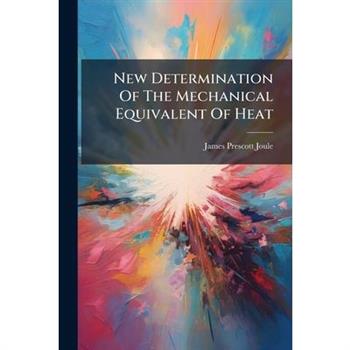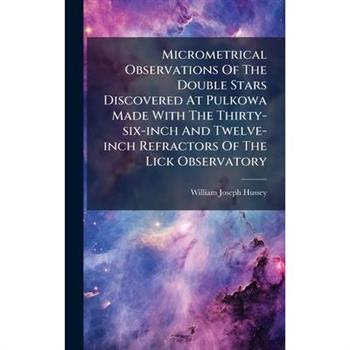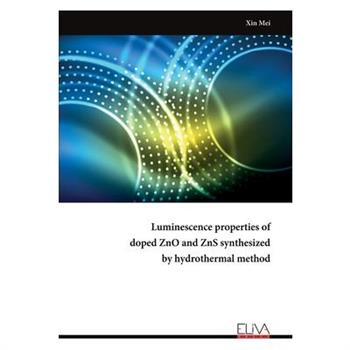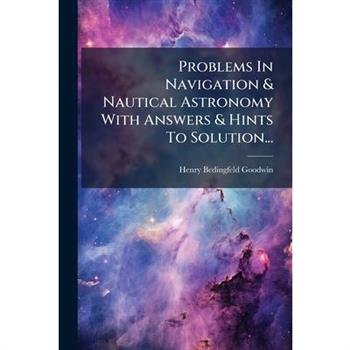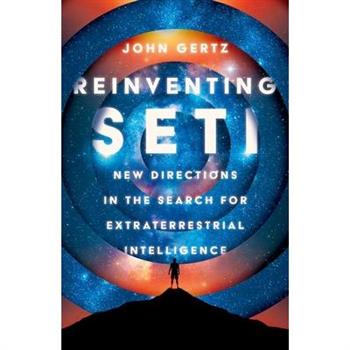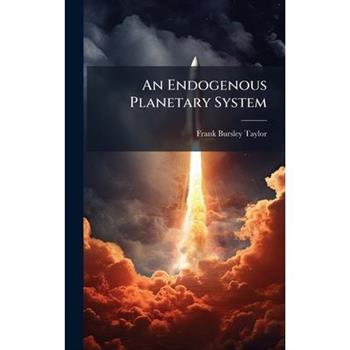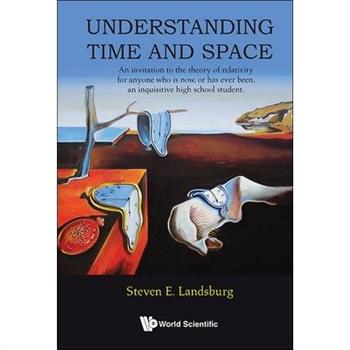Farm drainage; The Principles, Processes, and Effects of Draining Land with Stones, Wood, Plows, and Open Ditches, and Especially with Tiles
Unlock the secrets to sustainable farming with "Farm Drainage: The Principles, Processes, and Effects of Draining Land with Stones, Wood, Plows, and Open Ditches, and Especially with Tiles." This groundbreaking work, now republished by Alpha Editions after decades of being out of print, is not merely a reprint it's a collector's item and a cultural treasure, meticulously restored for today s and future generations. Dive into the core of agricultural innovation as you explore effective drainage practices that have shaped farming landscapes. This essential guide covers a variety of land drainage methods, from traditional open ditch drainage to the revolutionary benefits of tile drainage. Discover how these techniques can dramatically improve crop yields and enhance soil water management, making it an invaluable resource for both casual readers and classic literature collectors alike. With its unique blend of historical significance and practical application, "Farm Drainage" serves as a testament to the evolution of agricultural drainage systems. This book not only preserves the wisdom of the past but also inspires modern sustainable farming practices. Don t miss your chance to own this remarkable edition where the excitement of agricultural advancement meets the reverence of literary heritage. Secure your copy today and cultivate a deeper understanding of the art and science of farm drainage!
Field, Forest and Farm; Things interesting to young nature-lovers, including some matters of moment to gardeners and fruit-growers
Unlock the wonders of the natural world with "Field, Forest and Farm," a captivating guide designed for young nature-lovers and aspiring gardeners alike. This enchanting book invites children to embark on thrilling outdoor adventures, exploring the beauty of wildlife and the secrets of sustainable farming practices. With its rich tapestry of insights, it offers invaluable gardening tips for beginners and practical fruit-growing techniques that inspire environmental awareness in the next generation. Originally out of print for decades, this cherished classic has been lovingly restored by Alpha Editions, ensuring that its timeless wisdom is accessible to today s readers. This edition is not merely a reprint; it s a collector s item and a cultural treasure, perfect for both casual readers and classic literature enthusiasts. Delve into educational nature books that spark curiosity and creativity in young learners. Whether it s backyard gardening ideas or wildlife observation guides, "Field, Forest and Farm" is a must-have for every family eager to cultivate a love for nature. Join the movement of nature-loving kids and inspire a lifelong passion for the outdoors. Rediscover the joy of exploration and nurture young imaginations with this beautifully republished gem that bridges generations.
Encyclopaedia Britannica, 11th Edition, "Liquid Gases" to "Logar" Volume 16, Slice 7
Discover the treasure trove of knowledge within the pages of the *Encyclopaedia Britannica, 11th Edition, Volume 16, Slice 7*, now brought back to life by Alpha Editions after decades of being out of print. This meticulously restored edition is not just a reprint; it s a collector s item and a cultural treasure that bridges the past and the present. Dive into a comprehensive guide that covers fascinating topics from "Liquid Gases" to "Logar," showcasing the breadth of human understanding and scientific exploration. This volume serves as both a historical reference and an invaluable educational resource, perfect for casual readers seeking to enrich their knowledge and for classic literature collectors eager to own a piece of intellectual history. With its blend of accessible language and profound insights, this edition captures the essence of classic encyclopedia literature, making it an essential addition to any library. Whether you re conducting research or simply indulging your curiosity, this book stands as a testament to the enduring quest for knowledge. Join the ranks of those who appreciate the beauty of well-crafted literature and the importance of preserving our intellectual heritage. Grab your copy today and be part of a journey that honors the past while inspiring future generations!
The Ghost in the Telescope
The Ghost in the Telescope is an account of the Herschel Space Observatory, which was built to answer the questions of how galaxies were born. Written in a manner for a general audience, the book tells the stories of the telescope itself, discoveries it made, and the engineers and astronomers who made and used it.
Encyclopaedia Britannica, 11th Edition, "Hydromechanics" to "Ichnography" Volume 14, Slice 2
Dive into the depths of knowledge with the "Encyclopaedia Britannica, 11th Edition, Volume 14, Slice 2," now revitalized and republished by Alpha Editions. This remarkable volume, covering essential topics from Hydromechanics to Ichnography, serves as a comprehensive guide that bridges the gap between historical scholarship and modern inquiry. For decades, this treasure remained out of print, but now it has been meticulously restored for today s and future generations. This edition is not merely a reprint; it s a collector s item that embodies the spirit of inquiry and the pursuit of knowledge. Whether you re a casual reader curious about engineering principles or a dedicated scholar seeking a reliable educational resource, this book offers a wealth of information on fluid mechanics and the intricate world of scientific reference. The "Encyclopaedia Britannica" stands as a testament to the evolution of scholarly literature, making it a vital addition to any library. Its unique literary significance lies in its ability to inform and inspire, providing insights that are as relevant today as they were when first penned. Don t miss your chance to own this cultural treasure that enriches both the mind and the soul. Embrace the legacy of knowledge with this essential volume, perfect for both classic literature collectors and modern readers alike.
Electromagnetism: Volume 2
There are four forces in our universe. Two act only at the very smallest scales and one only at the very biggest. For everything inbetween, there is electromagnetism. The theory of electromagnetism is described by four gloriously simple and beautiful vector calculus equations known as the Maxwell equations. These are the first genuinely fundamental equations that we meet in our physics education and they survive, essentially unchanged, in our best modern theories of physics. They also serve as a blueprint for what subsequent laws of physics look like. This textbook takes us on a tour of the Maxwell equations and their many solutions. It starts with the basics of electric and magnetic phenomena and explains how their unification results in waves that we call light. It then describes more advanced topics such as superconductors, monopoles, radiation, and electromagnetism in matter. The book concludes with a detailed review of the mathematics of vector calculus.
Fluid Mechanics: Volume 4
Take anything in the universe, put it in a box, and heat it up. Regardless of what you start with, the motion of the substance will be described by the equations of fluid mechanics. This remarkable universality is the reason why fluid mechanics is important. The key equation of fluid mechanics is the Navier-Stokes equation. This textbook starts with the basics of fluid flows, building to the Navier-Stokes equation while explaining the physics behind the various terms and exploring the astonishingly rich landscape of solutions. The book then progresses to more advanced topics, including waves, fluid instabilities, and turbulence, before concluding by turning inwards and describing the atomic constituents of fluids. It introduces ideas of kinetic theory, including the Boltzmann equation, to explain why the collective motion of 1023 atoms is, under the right circumstances, always governed by the laws of fluid mechanics.
Classical Mechanics: Volume 1
Any education in theoretical physics begins with the laws of classical mechanics. The basics of the subject were laid down long ago by Galileo and Newton and are enshrined in the famous equation F=ma that we all learn in school. But there is much more to the subject and, in the intervening centuries, the laws of classical mechanics were reformulated to emphasis deeper concepts such as energy, symmetry, and action. This textbook describes these different approaches to classical mechanics, starting with Newton's laws before turning to subsequent developments such as the Lagrangian and Hamiltonian approaches. The book emphasises Noether's profound insights into symmetries and conservation laws, as well as Einstein's vision of spacetime, encapsulated in the theory of special relativity. Classical mechanics is not the last word on theoretical physics. But it is the foundation for all that follows. The purpose of this book is to provide this foundation.
Smart Materials for Energy Storage and Biomedical Applications
Nanoscience & Nanotechnologies
Nanoscience has explored new modelling and new devices in the applied sciences and technologies, in health and life sciences. This includes work on structures, nano-machines, communications, environment and materials science, closing the gap for society toward a sustainable civilization. Feynman's Plenty of Room (1959) opened a new perspective/science in society debate: how can we handle the applications--and--implications of nanoscience? What is the human factor in the 21st century? This volume offers both the state-of-the-art in the field and the corresponding research with discussion of exciting developments in nanoscience technologies, including historical, educational and societal aspects. For the first time, in a unique volume, it brings together cutting-edge chapters in a multi-disciplinary and historical context. It describes the ways it differently accounted for variation in unlike countries and consequently how its results remain, still nowadays, a debated question, as well as due to constraints preventing an extensive exploration of its remarkable historiography. It is written by leading authoritative scholars working in the various respective fields. This book is ideal for scientists, historians, and scholars interested in nanoscience and its historical-societal ramifications.
Classical Mechanics: Volume 1
Any education in theoretical physics begins with the laws of classical mechanics. The basics of the subject were laid down long ago by Galileo and Newton and are enshrined in the famous equation F=ma that we all learn in school. But there is much more to the subject and, in the intervening centuries, the laws of classical mechanics were reformulated to emphasis deeper concepts such as energy, symmetry, and action. This textbook describes these different approaches to classical mechanics, starting with Newton's laws before turning to subsequent developments such as the Lagrangian and Hamiltonian approaches. The book emphasises Noether's profound insights into symmetries and conservation laws, as well as Einstein's vision of spacetime, encapsulated in the theory of special relativity. Classical mechanics is not the last word on theoretical physics. But it is the foundation for all that follows. The purpose of this book is to provide this foundation.
Electromagnetism: Volume 2
There are four forces in our universe. Two act only at the very smallest scales and one only at the very biggest. For everything inbetween, there is electromagnetism. The theory of electromagnetism is described by four gloriously simple and beautiful vector calculus equations known as the Maxwell equations. These are the first genuinely fundamental equations that we meet in our physics education and they survive, essentially unchanged, in our best modern theories of physics. They also serve as a blueprint for what subsequent laws of physics look like. This textbook takes us on a tour of the Maxwell equations and their many solutions. It starts with the basics of electric and magnetic phenomena and explains how their unification results in waves that we call light. It then describes more advanced topics such as superconductors, monopoles, radiation, and electromagnetism in matter. The book concludes with a detailed review of the mathematics of vector calculus.
Fluid Mechanics: Volume 4
Take anything in the universe, put it in a box, and heat it up. Regardless of what you start with, the motion of the substance will be described by the equations of fluid mechanics. This remarkable universality is the reason why fluid mechanics is important. The key equation of fluid mechanics is the Navier-Stokes equation. This textbook starts with the basics of fluid flows, building to the Navier-Stokes equation while explaining the physics behind the various terms and exploring the astonishingly rich landscape of solutions. The book then progresses to more advanced topics, including waves, fluid instabilities, and turbulence, before concluding by turning inwards and describing the atomic constituents of fluids. It introduces ideas of kinetic theory, including the Boltzmann equation, to explain why the collective motion of 1023 atoms is, under the right circumstances, always governed by the laws of fluid mechanics.
The Flight Physics Concept Inventory
The Flight Physics Concept Inventory (FliP-CoIn) is the first research-based conceptual assessment instrument for improving (fluid dynamics) learning and teaching. This work gives insights into why and how the FliP-CoIn was developed as well as how it is best used for improving conceptual learning. Further, this dissertation presents evidence for several dimensions of the FliP-CoIn's validity and reliability. Finally, the author discusses key insights from the development process, the data analysis, and gives recommendations for future research. As such, this work is also written as a blueprint for future education researchers and instrument developers of other contexts. The FliP-CoIn's context areas are flow, fluid dynamics and flight physics. The FliP-CoIn tests concepts of aerodynamic lift, aerodynamic drag, stall, center of mass, angle of attack and streamlines. The latest version and translations are available for educators at physport.org (or via flip-coin@uni-koeln.de).
Exploring the Electronic, Magnetic, Optical and Thermoelectric
The study investigates the structural, magnetic, electronic, optical and thermoelectric properties of MST (half-semi metallic) compound under strain engineering. Experimentally, MST is metallic nature with zero gap, low thermal conductivity, and minute thermoelectric efficiency (ZT 0.01 at 300K). By applying biaxial strain (tensile and compressive), the gap increased, showing a shift from -4% to +15% with SCF and -3% to +10% with GGA and GGA + TB-mBJ methods. At 4% tensile strain, MST exhibited half-semi metallic behavior with a significant gap (1.24 eV) at a high-symmetry point. Hybrid + SOC calculations showed enhanced thermoelectric performance, with ZT reaching 0.716 for p-type and 0.723 for n-type, suggesting MST potential for thermoelectric applications.
Proceedings of the International Conference on Material Science
Materials, Manufacturing Processes and Devices
Materials, Manufacturing Processes and Devices brings together research that highlights the synergy between advanced materials, innovative fabrication methods, and real-world device applications. This book showcases how material design and manufacturing techniques can drive performance in cutting-edge technologies. Bridging academic research and industry relevance, this volume is an essential reference for materials scientists, engineers, and researchers aiming to design functional materials and devices.
New Euclidon Method of Generating Stationary Vacuum Einstein
The purpose of this book is to systematically derive, as much as possible, the main exact asymptotically flat solutions of the static and stationary axially symmetric vacuum Einstein-Maxwell equations. The primary 'building block' used is the Euclidon solution, which has a clear physical interpretation as a relativistic accelerated non-inertial reference frame in the flat space-time.In the first part, static Einstein fields are considered. The one-static Euclidon solution and its generalizations are obtained by various methods.The second part deals with the main classes of stationary vacuum Einstein field solutions. The one-stationary soliton solution, the one-stationary Euclidon solution, and its physical interpretation are obtained.In the third part, using the method of variation of parameters, solutions are obtained including a two-Euclidon stationary solution, which coincides with the Kerr-NUT solution.The fourth part deals with the main classes of static Einstein-Maxwell fields. The methods of superposition of the one-stationary Euclidon solution, the one-stationary soliton solution, and the two-Euclidon stationary solution with arbitrary external static electrovacuum fields are also applied to this case.The fifth part deals with stationary Einstein-Maxwell fields. The generalized solutions are constructed using symmetry transformations from the previously found solutions.
Analytical Quality Control in Radioanalytical Laboratories
The U.S. Environmental Protection Agency (EPA) was introduced on December 2, 1970 by President Richard Nixon. The agency is charged with protecting human health and the environment, by writing and enforcing regulations based on laws passed by Congress. The EPA's struggle to protect health and the environment is seen through each of its official publications. These publications outline new policies, detail problems with enforcing laws, document the need for new legislation, and describe new tactics to use to solve these issues. This collection of publications ranges from historic documents to reports released in the new millennium, and features works like: Bicycle for a Better Environment, Health Effects of Increasing Sulfur Oxides Emissions Draft, and Women and Environmental Health.This work has been selected by scholars as being culturally important, and is part of the knowledge base of civilization as we know it. This work was reproduced from the original artifact, and remains as true to the original work as possible. Therefore, you will see the original copyright references, library stamps (as most of these works have been housed in our most important libraries around the world), and other notations in the work.This work is in the public domain in the United States of America, and possibly other nations. Within the United States, you may freely copy and distribute this work, as no entity (individual or corporate) has a copyright on the body of the work.As a reproduction of a historical artifact, this work may contain missing or blurred pages, poor pictures, errant marks, etc. Scholars believe, and we concur, that this work is important enough to be preserved, reproduced, and made generally available to the public. We appreciate your support of the preservation process, and thank you for being an important part of keeping this knowledge alive and relevant.
United States Army Chemical, Biological, Radiological and Nuclear Corps Capability for Combating the Contemporary Weapons of Mass Destruction Threat
The threat of a Weapons of Mass Destruction (WMD) attack against the United States is more significant than ever. The United States Army Chemical, Biological, Radiological and Nuclear (CBRN) corps is designed to deal with the results of this attack; however the focus of the CBRN corps has shifted from the passive defense (reactive) posture to the active defense (proactive) posture. A key mission in the conduct of active CBRN defense is the WMD elimination mission. This study examines the United States Army CBRN corps doctrine, organization, and material in order to conduct the WMD elimination mission.This work has been selected by scholars as being culturally important, and is part of the knowledge base of civilization as we know it. This work was reproduced from the original artifact, and remains as true to the original work as possible. Therefore, you will see the original copyright references, library stamps (as most of these works have been housed in our most important libraries around the world), and other notations in the work.This work is in the public domain in the United States of America, and possibly other nations. Within the United States, you may freely copy and distribute this work, as no entity (individual or corporate) has a copyright on the body of the work.As a reproduction of a historical artifact, this work may contain missing or blurred pages, poor pictures, errant marks, etc. Scholars believe, and we concur, that this work is important enough to be preserved, reproduced, and made generally available to the public. We appreciate your support of the preservation process, and thank you for being an important part of keeping this knowledge alive and relevant.
Researches On Solar Physics
Researches on Solar Physics, Volume 2, presents the collaborative work of Warren De La Rue, Balfour Stewart, and Benjamin Loewy. This historical text details their groundbreaking investigations into the sun's physical properties during the 19th century. The book offers insights into early methods of solar observation and analysis. It stands as a testament to the dedication and ingenuity of these pioneering scientists, capturing a pivotal era in the development of astrophysics. This volume is a valuable resource for historians of science, astronomers, and anyone interested in the evolution of our understanding of the sun.This work has been selected by scholars as being culturally important, and is part of the knowledge base of civilization as we know it. This work was reproduced from the original artifact, and remains as true to the original work as possible. Therefore, you will see the original copyright references, library stamps (as most of these works have been housed in our most important libraries around the world), and other notations in the work.This work is in the public domain in the United States of America, and possibly other nations. Within the United States, you may freely copy and distribute this work, as no entity (individual or corporate) has a copyright on the body of the work.As a reproduction of a historical artifact, this work may contain missing or blurred pages, poor pictures, errant marks, etc. Scholars believe, and we concur, that this work is important enough to be preserved, reproduced, and made generally available to the public. We appreciate your support of the preservation process, and thank you for being an important part of keeping this knowledge alive and relevant.
Mother Hubble's Cupboard and Other Poems About Inner and Outer Space
Reading Mother Hubble's Cupboard by Sandra Lindow is like sitting in the overlap of a dozen different planet's busy orbits watching them whizz by, except instead of planets they are physics, ecology, sensuality, folklore, and more. Oh, and also sometimes planets. The first section casts the Hubble Telescope as the titular Mother Hubble, and more than just a tool she's a character, a photographer documenting the mysteries of space with an artist's eye. The poetry balances the desire to look up and out and understand with the impulse look back towards the past to name and emotionally process our place in the universe - for example, the Royal Astronomy's Society nickname of the Unicorn Black Hole, not to mention dwarf stars, universal soup, universal trees and even metaphors new to Lindow's collection, like the universe as a Russian Matreshka doll. And as much as the book wanders far beyond our planet and our solar system and even further, Lindow still remembers to bring us home occasionally. As she says, "the great blue beast you ride...She's all you have. Ride/gently." -Amelia Gorman, Field Guide to Invasive Species of Minnesota
Investigation Of The Objective And Micrometers Of The Twenty-six Inch Equatorial Constructed By Alvan Clark & Sons
Investigation Of The Objective And Micrometers Of The Twenty-six Inch Equatorial Constructed By Alvan Clark & Sons delves into the intricate details of a remarkable astronomical instrument. Authored by Edward Singleton Holden, this work provides a comprehensive analysis of the telescope's objective lens and micrometers, offering valuable insights for astronomers and historians of science alike. The book meticulously examines the construction and performance of the twenty-six inch equatorial telescope, a significant achievement by Alvan Clark & Sons, renowned makers of precision optical instruments. Holden's investigation highlights the technical challenges and innovative solutions involved in creating such a powerful tool for exploring the cosmos. This study remains a valuable resource for understanding the evolution of astronomical technology and the enduring legacy of craftsmanship in scientific instrument making.This work has been selected by scholars as being culturally important, and is part of the knowledge base of civilization as we know it. This work was reproduced from the original artifact, and remains as true to the original work as possible. Therefore, you will see the original copyright references, library stamps (as most of these works have been housed in our most important libraries around the world), and other notations in the work.This work is in the public domain in the United States of America, and possibly other nations. Within the United States, you may freely copy and distribute this work, as no entity (individual or corporate) has a copyright on the body of the work.As a reproduction of a historical artifact, this work may contain missing or blurred pages, poor pictures, errant marks, etc. Scholars believe, and we concur, that this work is important enough to be preserved, reproduced, and made generally available to the public. We appreciate your support of the preservation process, and thank you for being an important part of keeping this knowledge alive and relevant.
An Endogenous Planetary System
"An Endogenous Planetary System: A Study In Astronomy" presents Frank Bursley Taylor's detailed exploration of an alternative model for the formation and evolution of planetary systems. This work delves into the intricacies of celestial mechanics and offers a unique perspective on the forces shaping our solar system. Taylor challenges conventional wisdom, providing a thought-provoking analysis that remains relevant for anyone interested in the history of astronomy and the development of scientific thought.This book is a valuable resource for students, researchers, and enthusiasts seeking a deeper understanding of astronomical theories beyond the mainstream, and offers insights into the evolving nature of scientific inquiry and discovery.This work has been selected by scholars as being culturally important, and is part of the knowledge base of civilization as we know it. This work was reproduced from the original artifact, and remains as true to the original work as possible. Therefore, you will see the original copyright references, library stamps (as most of these works have been housed in our most important libraries around the world), and other notations in the work.This work is in the public domain in the United States of America, and possibly other nations. Within the United States, you may freely copy and distribute this work, as no entity (individual or corporate) has a copyright on the body of the work.As a reproduction of a historical artifact, this work may contain missing or blurred pages, poor pictures, errant marks, etc. Scholars believe, and we concur, that this work is important enough to be preserved, reproduced, and made generally available to the public. We appreciate your support of the preservation process, and thank you for being an important part of keeping this knowledge alive and relevant.
New Determination Of The Mechanical Equivalent Of Heat
"New Determination Of The Mechanical Equivalent Of Heat" presents James Prescott Joule's groundbreaking research on the relationship between mechanical work and heat. This scientific paper details Joule's meticulous experiments to precisely measure the amount of work needed to produce a unit of heat, establishing a fundamental principle in thermodynamics. His work demonstrated the equivalence of mechanical energy and heat, laying the foundation for the first law of thermodynamics and revolutionizing our understanding of energy.Joule's experiments, described in detail within this volume, are a cornerstone of modern physics and engineering. This publication is essential reading for anyone interested in the history of science, thermodynamics, and the development of energy conservation principles. Joule's legacy endures as a pivotal figure in the advancement of scientific knowledge.This work has been selected by scholars as being culturally important, and is part of the knowledge base of civilization as we know it. This work was reproduced from the original artifact, and remains as true to the original work as possible. Therefore, you will see the original copyright references, library stamps (as most of these works have been housed in our most important libraries around the world), and other notations in the work.This work is in the public domain in the United States of America, and possibly other nations. Within the United States, you may freely copy and distribute this work, as no entity (individual or corporate) has a copyright on the body of the work.As a reproduction of a historical artifact, this work may contain missing or blurred pages, poor pictures, errant marks, etc. Scholars believe, and we concur, that this work is important enough to be preserved, reproduced, and made generally available to the public. We appreciate your support of the preservation process, and thank you for being an important part of keeping this knowledge alive and relevant.
Micrometrical Observations Of The Double Stars Discovered At Pulkowa Made With The Thirty-six-inch And Twelve-inch Refractors Of The Lick Observatory
"Micrometrical Observations Of The Double Stars Discovered At Pulkowa" presents a detailed compilation of astronomical observations conducted primarily at the Lick Observatory, focusing on double stars. Authored by William Joseph Hussey, this work meticulously documents measurements taken with the thirty-six-inch and twelve-inch refractors, complemented by a synthesis of previous observations of these celestial objects. The book serves as a valuable resource for astronomers and astrophysicists, offering precise data and analysis of double star systems. Its historical significance lies in its contribution to the understanding of stellar dynamics and the refinement of observational techniques in early 20th-century astronomy. The inclusion of data from both new and past observations enhances the work's utility for comparative studies and longitudinal analysis.This work has been selected by scholars as being culturally important, and is part of the knowledge base of civilization as we know it. This work was reproduced from the original artifact, and remains as true to the original work as possible. Therefore, you will see the original copyright references, library stamps (as most of these works have been housed in our most important libraries around the world), and other notations in the work.This work is in the public domain in the United States of America, and possibly other nations. Within the United States, you may freely copy and distribute this work, as no entity (individual or corporate) has a copyright on the body of the work.As a reproduction of a historical artifact, this work may contain missing or blurred pages, poor pictures, errant marks, etc. Scholars believe, and we concur, that this work is important enough to be preserved, reproduced, and made generally available to the public. We appreciate your support of the preservation process, and thank you for being an important part of keeping this knowledge alive and relevant.
New Determination Of The Mechanical Equivalent Of Heat
"New Determination Of The Mechanical Equivalent Of Heat" presents James Prescott Joule's groundbreaking research on the relationship between mechanical work and heat. This scientific paper details Joule's meticulous experiments to precisely measure the amount of work needed to produce a unit of heat, establishing a fundamental principle in thermodynamics. His work demonstrated the equivalence of mechanical energy and heat, laying the foundation for the first law of thermodynamics and revolutionizing our understanding of energy.Joule's experiments, described in detail within this volume, are a cornerstone of modern physics and engineering. This publication is essential reading for anyone interested in the history of science, thermodynamics, and the development of energy conservation principles. Joule's legacy endures as a pivotal figure in the advancement of scientific knowledge.This work has been selected by scholars as being culturally important, and is part of the knowledge base of civilization as we know it. This work was reproduced from the original artifact, and remains as true to the original work as possible. Therefore, you will see the original copyright references, library stamps (as most of these works have been housed in our most important libraries around the world), and other notations in the work.This work is in the public domain in the United States of America, and possibly other nations. Within the United States, you may freely copy and distribute this work, as no entity (individual or corporate) has a copyright on the body of the work.As a reproduction of a historical artifact, this work may contain missing or blurred pages, poor pictures, errant marks, etc. Scholars believe, and we concur, that this work is important enough to be preserved, reproduced, and made generally available to the public. We appreciate your support of the preservation process, and thank you for being an important part of keeping this knowledge alive and relevant.
Investigation Of The Objective And Micrometers Of The Twenty-six Inch Equatorial Constructed By Alvan Clark & Sons
Investigation Of The Objective And Micrometers Of The Twenty-six Inch Equatorial Constructed By Alvan Clark & Sons delves into the intricate details of a remarkable astronomical instrument. Authored by Edward Singleton Holden, this work provides a comprehensive analysis of the telescope's objective lens and micrometers, offering valuable insights for astronomers and historians of science alike. The book meticulously examines the construction and performance of the twenty-six inch equatorial telescope, a significant achievement by Alvan Clark & Sons, renowned makers of precision optical instruments. Holden's investigation highlights the technical challenges and innovative solutions involved in creating such a powerful tool for exploring the cosmos. This study remains a valuable resource for understanding the evolution of astronomical technology and the enduring legacy of craftsmanship in scientific instrument making.This work has been selected by scholars as being culturally important, and is part of the knowledge base of civilization as we know it. This work was reproduced from the original artifact, and remains as true to the original work as possible. Therefore, you will see the original copyright references, library stamps (as most of these works have been housed in our most important libraries around the world), and other notations in the work.This work is in the public domain in the United States of America, and possibly other nations. Within the United States, you may freely copy and distribute this work, as no entity (individual or corporate) has a copyright on the body of the work.As a reproduction of a historical artifact, this work may contain missing or blurred pages, poor pictures, errant marks, etc. Scholars believe, and we concur, that this work is important enough to be preserved, reproduced, and made generally available to the public. We appreciate your support of the preservation process, and thank you for being an important part of keeping this knowledge alive and relevant.
Problems In Navigation & Nautical Astronomy With Answers & Hints To Solution...
"Problems In Navigation & Nautical Astronomy" offers a comprehensive collection of exercises designed to test and enhance the skills of navigators and those studying nautical astronomy. Authored by Henry Bedingfeld Goodwin, this resource provides a wealth of practical problems related to celestial navigation, accompanied by detailed answers and helpful hints to guide the reader through each solution.This book serves as an invaluable tool for both students and professionals seeking to deepen their understanding of the calculations and principles underlying celestial navigation. Its focus on problem-solving makes it an ideal resource for self-study or classroom use.This work has been selected by scholars as being culturally important, and is part of the knowledge base of civilization as we know it. This work was reproduced from the original artifact, and remains as true to the original work as possible. Therefore, you will see the original copyright references, library stamps (as most of these works have been housed in our most important libraries around the world), and other notations in the work.This work is in the public domain in the United States of America, and possibly other nations. Within the United States, you may freely copy and distribute this work, as no entity (individual or corporate) has a copyright on the body of the work.As a reproduction of a historical artifact, this work may contain missing or blurred pages, poor pictures, errant marks, etc. Scholars believe, and we concur, that this work is important enough to be preserved, reproduced, and made generally available to the public. We appreciate your support of the preservation process, and thank you for being an important part of keeping this knowledge alive and relevant.
Observations Upon The Great Nebula Of Orion
Observations Upon The Great Nebula Of Orion, by George Phillips Bond, presents a detailed study of one of the most famous and visually stunning objects in the night sky. This work, originally published in the 19th century, provides a meticulous account of the Orion Nebula based on extensive telescopic observations. Bond's work offers valuable insights into the scientific understanding of nebulae during his time. This book includes detailed descriptions and analyses of the nebula's structure, luminosity, and physical characteristics, making it an important resource for astronomers and students of astrophysics. The historical context of Bond's observations adds to the book's significance, showing the evolution of astronomical techniques and knowledge. "Observations Upon The Great Nebula Of Orion" is a timeless contribution to the field, offering a blend of detailed scientific data and historical perspective.This work has been selected by scholars as being culturally important, and is part of the knowledge base of civilization as we know it. This work was reproduced from the original artifact, and remains as true to the original work as possible. Therefore, you will see the original copyright references, library stamps (as most of these works have been housed in our most important libraries around the world), and other notations in the work.This work is in the public domain in the United States of America, and possibly other nations. Within the United States, you may freely copy and distribute this work, as no entity (individual or corporate) has a copyright on the body of the work.As a reproduction of a historical artifact, this work may contain missing or blurred pages, poor pictures, errant marks, etc. Scholars believe, and we concur, that this work is important enough to be preserved, reproduced, and made generally available to the public. We appreciate your support of the preservation process, and thank you for being an important part of keeping this knowledge alive and relevant.
Popular Lectures And Addresses
"Popular Lectures and Addresses, Vol. 3: Navigational Affairs" presents a collection of insightful lectures and addresses by the esteemed Baron William Thomson Kelvin, a towering figure in 19th-century physics and engineering. This volume focuses on the critical field of navigation, reflecting Kelvin's significant contributions to improving maritime safety and efficiency.Kelvin's work revolutionized navigational practices through his innovations in compass design, depth sounding, and tide prediction. This book offers a glimpse into the mind of a scientific visionary, showcasing his ability to translate complex theoretical concepts into practical applications that had a profound impact on the world.These lectures, delivered to both scientific and general audiences, reveal Kelvin's deep understanding of the physical principles underlying navigation and his commitment to advancing the field. This book is invaluable for historians of science, engineers, and anyone interested in the intersection of scientific inquiry and practical innovation.This work has been selected by scholars as being culturally important, and is part of the knowledge base of civilization as we know it. This work was reproduced from the original artifact, and remains as true to the original work as possible. Therefore, you will see the original copyright references, library stamps (as most of these works have been housed in our most important libraries around the world), and other notations in the work.This work is in the public domain in the United States of America, and possibly other nations. Within the United States, you may freely copy and distribute this work, as no entity (individual or corporate) has a copyright on the body of the work.As a reproduction of a historical artifact, this work may contain missing or blurred pages, poor pictures, errant marks, etc. Scholars believe, and we concur, that this work is important enough to be preserved, reproduced, and made generally available to the public. We appreciate your support of the preservation process, and thank you for being an important part of keeping this knowledge alive and relevant.
Luminescence properties of doped ZnO and ZnS synthesized by hydrothermal method
This book investigates in detail the effects of process conditions such as doping concentration, annealing temperature, and hydrothermal treatment time on the structure, morphology, and luminescent properties of ZnO and ZnS. It also highlights their potential application value, which is significant for the preparation of the same matrix material and its application in various fields.
Practical Exercises In Astronomy
Practical Exercises In Astronomy is a comprehensive laboratory manual designed for beginning students of astronomy. Authored by Goodwin DeLoss Swezey, this book provides a series of practical exercises aimed at enhancing the understanding of astronomical principles through direct observation and experimentation. Covering a range of topics from celestial coordinates to the observation of planets and stars, this manual offers hands-on activities that bring the concepts of astronomy to life. Students will learn how to use basic astronomical instruments, perform calculations, and interpret observational data, making it an invaluable resource for anyone starting their journey in astronomy. "Practical Exercises In Astronomy" remains a useful and accessible guide for educators and self-learners alike.This work has been selected by scholars as being culturally important, and is part of the knowledge base of civilization as we know it. This work was reproduced from the original artifact, and remains as true to the original work as possible. Therefore, you will see the original copyright references, library stamps (as most of these works have been housed in our most important libraries around the world), and other notations in the work.This work is in the public domain in the United States of America, and possibly other nations. Within the United States, you may freely copy and distribute this work, as no entity (individual or corporate) has a copyright on the body of the work.As a reproduction of a historical artifact, this work may contain missing or blurred pages, poor pictures, errant marks, etc. Scholars believe, and we concur, that this work is important enough to be preserved, reproduced, and made generally available to the public. We appreciate your support of the preservation process, and thank you for being an important part of keeping this knowledge alive and relevant.
Micrometrical Observations Of The Double Stars Discovered At Pulkowa Made With The Thirty-six-inch And Twelve-inch Refractors Of The Lick Observatory
"Micrometrical Observations Of The Double Stars Discovered At Pulkowa" presents a detailed compilation of astronomical observations conducted primarily at the Lick Observatory, focusing on double stars. Authored by William Joseph Hussey, this work meticulously documents measurements taken with the thirty-six-inch and twelve-inch refractors, complemented by a synthesis of previous observations of these celestial objects. The book serves as a valuable resource for astronomers and astrophysicists, offering precise data and analysis of double star systems. Its historical significance lies in its contribution to the understanding of stellar dynamics and the refinement of observational techniques in early 20th-century astronomy. The inclusion of data from both new and past observations enhances the work's utility for comparative studies and longitudinal analysis.This work has been selected by scholars as being culturally important, and is part of the knowledge base of civilization as we know it. This work was reproduced from the original artifact, and remains as true to the original work as possible. Therefore, you will see the original copyright references, library stamps (as most of these works have been housed in our most important libraries around the world), and other notations in the work.This work is in the public domain in the United States of America, and possibly other nations. Within the United States, you may freely copy and distribute this work, as no entity (individual or corporate) has a copyright on the body of the work.As a reproduction of a historical artifact, this work may contain missing or blurred pages, poor pictures, errant marks, etc. Scholars believe, and we concur, that this work is important enough to be preserved, reproduced, and made generally available to the public. We appreciate your support of the preservation process, and thank you for being an important part of keeping this knowledge alive and relevant.
Problems In Navigation & Nautical Astronomy With Answers & Hints To Solution...
"Problems In Navigation & Nautical Astronomy" offers a comprehensive collection of exercises designed to test and enhance the skills of navigators and those studying nautical astronomy. Authored by Henry Bedingfeld Goodwin, this resource provides a wealth of practical problems related to celestial navigation, accompanied by detailed answers and helpful hints to guide the reader through each solution.This book serves as an invaluable tool for both students and professionals seeking to deepen their understanding of the calculations and principles underlying celestial navigation. Its focus on problem-solving makes it an ideal resource for self-study or classroom use.This work has been selected by scholars as being culturally important, and is part of the knowledge base of civilization as we know it. This work was reproduced from the original artifact, and remains as true to the original work as possible. Therefore, you will see the original copyright references, library stamps (as most of these works have been housed in our most important libraries around the world), and other notations in the work.This work is in the public domain in the United States of America, and possibly other nations. Within the United States, you may freely copy and distribute this work, as no entity (individual or corporate) has a copyright on the body of the work.As a reproduction of a historical artifact, this work may contain missing or blurred pages, poor pictures, errant marks, etc. Scholars believe, and we concur, that this work is important enough to be preserved, reproduced, and made generally available to the public. We appreciate your support of the preservation process, and thank you for being an important part of keeping this knowledge alive and relevant.
Popular Lectures And Addresses
"Popular Lectures and Addresses, Vol. 3: Navigational Affairs" presents a collection of insightful lectures and addresses by the esteemed Baron William Thomson Kelvin, a towering figure in 19th-century physics and engineering. This volume focuses on the critical field of navigation, reflecting Kelvin's significant contributions to improving maritime safety and efficiency.Kelvin's work revolutionized navigational practices through his innovations in compass design, depth sounding, and tide prediction. This book offers a glimpse into the mind of a scientific visionary, showcasing his ability to translate complex theoretical concepts into practical applications that had a profound impact on the world.These lectures, delivered to both scientific and general audiences, reveal Kelvin's deep understanding of the physical principles underlying navigation and his commitment to advancing the field. This book is invaluable for historians of science, engineers, and anyone interested in the intersection of scientific inquiry and practical innovation.This work has been selected by scholars as being culturally important, and is part of the knowledge base of civilization as we know it. This work was reproduced from the original artifact, and remains as true to the original work as possible. Therefore, you will see the original copyright references, library stamps (as most of these works have been housed in our most important libraries around the world), and other notations in the work.This work is in the public domain in the United States of America, and possibly other nations. Within the United States, you may freely copy and distribute this work, as no entity (individual or corporate) has a copyright on the body of the work.As a reproduction of a historical artifact, this work may contain missing or blurred pages, poor pictures, errant marks, etc. Scholars believe, and we concur, that this work is important enough to be preserved, reproduced, and made generally available to the public. We appreciate your support of the preservation process, and thank you for being an important part of keeping this knowledge alive and relevant.
From Newton's Second Law to the Decoding of Complex Fluctuations
This book introduces the latest results of interdisciplinary research on complex systems. Dr. He Zonglu obtained the nonlinear autoregressive integrated (NLARI) model for describing complex systems by mathematizing Newton's second law in stochastic systems. The NLARI model clarifies the generative mechanism and regulatory mechanism of complex systems (open systems, feedback loops, system evolution, randomness, nonlinearity, fractality and adaptability). In particular, nonlinear dynamical behavior and fractal behavior arise from the same physical integer-dimensional topological space, the former depending on the restoring and resisting forces within the system, and the latter as a product of fluctuations, which are the system's response to external perturbations. Self-adaptive functions are the product of maintaining stable fixed points through the resilience of Gaussian function component with the resistance. Separate complementary modeling of networks, emergence, spontaneous order, and self-organizing behavior. Applied results include SSCCPI circuits for efficient temporal signal propagation of high-intensity information in cortical networks, heart rate/heart rate variability for identifying heart disease and predicting the risk of sudden cardiac death, and optimal pathway for economic growth. This book demonstrates that the optimal way to increase profits at von Neumann equilibrium prices is achieved by a dynamic equilibrium-stabilizing fixed point formed by market competition, and that the ratio of average investment to economic resistance coefficient determines the rate of economic growth. NLARI model-based approach standardizes the research methodology in the field of complex systems. The methodology is highly interpretable, since all parameters are derived mathematically, have the same dynamical meaning and different physical meaning. The book details modeling, parameter estimation, statistical tests, algorithms, prediction, simulation, and interpretation of results and phenomena, and provides examples of applications in biology, network theory, medicine, and economics. This book is applicable to the study of complexity in a wide range of fields.
Advances in Terahertz Sensing
Advances in Terahertz Sensing: Design, Optimization and Behavior Prediction with AI" presents a rigorous exploration of the latest developments in terahertz (THz) sensing technologies. This scholarly compilation gathers cutting-edge research focused on the design and optimization of THz sensors utilizing advanced materials, including graphene and MXene, as well as innovative metasurface structures to achieve unprecedented sensitivity and specificity for a variety of applications. The volume highlights the integration of artificial intelligence (AI) techniques, particularly machine learning algorithms, in the predictive modeling of sensor behavior.
Matter-Dimensions Symmetry
To make a better parallel between quantum entanglement and Young's double-slit interferometer (or Young's interferences) we find the matter-dimension symmetry which says that in 3 dimensions we have: with x: amplification ratio, mi.x簡 = Mplanck, . .., in 5 dimensions we have: with x: amplification ratio, mi3.x⁴ = Mplanck3 and in n dimensions: m^(n-2).x^(n-1) = h^((n-2 )/2)*C^((n-2)/2)/G^((n-2)/2), with Mplanck^d = h^(d/2)*C^(d/2)/G^(d/2). A magnetically Arrested Disks should prevent the formation of jets via an accretion disk. But particles as small as neutrinos come out of an accretion disk and function after the transformation of their initial mass mi: mi → x.mi as matter (transformed matter) source of jets. In a dense plasma, such as that present in the hearts of stars, the number of neutrinos emitted per kilogram of matter can be of the order of 10⊃1;⁸ to 10⊃2;⁰ neutrinos per second, while on average, a kilogram of matter emits approximately 3 x 10⊃1;⁰ neutrinos per second, and with black holes core edge we reach 1.75288144895719 x 10⁹ more neutrinos emitted (10⊃2;⁰ x 1.75288144895719 x 10⁹) to produce-transform x.m_anti-neutrino = 5.704892367906067*10^-34 kg (x>=10⊃2;⁰) from matter-dimension symmetry process.
Reinventing Seti
For millennia, humanity has looked up at the sprawling tapestry of stars and wondered what lay beyond. With time, we learned that each star is not a pinprick point in a domed sky, but a massive plasma sphere so far away that the distance becomes incomprehensible to the human mind, measured in light years of millions and billions. This distance invokes crucial questions. Do we share the universe with other intelligent lifeforms? If so, how do we approach the Search for Extraterrestrial Intelligence (SETI)? Lastly, do we need to examine our assumptions about extraterrestrial intelligence? Reinventing SETI clears out the cobwebs of outdated or wrongheaded SETI paradigms such as Fermi's Paradox, the Drake Equation, and METI (i.e., proactively sending signals from Earth to putative aliens). It argues that scientists should approach the pursuit of extraterrestrials (ETs) in a more effective manner. Author John Gertz states that ETs, as biological lifeforms themselves, cannot accomplish interstellar travel, but have instead placed robotic probes throughout the universe, perhaps even in our own Solar System. Gertz also warns that humankind is woefully unprepared for the day of First Contact with an alien probe right here in our own backyard. He suggests contingency planning, involving international cooperation as well as broad cross-disciplinary expertise. Humorous and deeply informative, this book takes the reader through the universe, conventional SETI methods, ideas on future ET exploration, and a discussion on who else shares this space.
Centrifugal Force And Gravitation
"Centrifugal Force and Gravitation: A Lecture," Volume 3, presents John Harris's exploration of these fundamental concepts in physics. This lecture delves into the intricacies of centrifugal force and its relationship to gravitation, offering readers a detailed understanding of the mechanics involved.Harris's work provides valuable insights into the scientific principles that govern the motion of objects and the forces that act upon them. This volume is essential for anyone interested in gaining a deeper knowledge of physics and the underlying mechanics of the universe.This work has been selected by scholars as being culturally important, and is part of the knowledge base of civilization as we know it. This work was reproduced from the original artifact, and remains as true to the original work as possible. Therefore, you will see the original copyright references, library stamps (as most of these works have been housed in our most important libraries around the world), and other notations in the work.This work is in the public domain in the United States of America, and possibly other nations. Within the United States, you may freely copy and distribute this work, as no entity (individual or corporate) has a copyright on the body of the work.As a reproduction of a historical artifact, this work may contain missing or blurred pages, poor pictures, errant marks, etc. Scholars believe, and we concur, that this work is important enough to be preserved, reproduced, and made generally available to the public. We appreciate your support of the preservation process, and thank you for being an important part of keeping this knowledge alive and relevant.
An Endogenous Planetary System
"An Endogenous Planetary System: A Study In Astronomy" presents Frank Bursley Taylor's detailed exploration of an alternative model for the formation and evolution of planetary systems. This work delves into the intricacies of celestial mechanics and offers a unique perspective on the forces shaping our solar system. Taylor challenges conventional wisdom, providing a thought-provoking analysis that remains relevant for anyone interested in the history of astronomy and the development of scientific thought.This book is a valuable resource for students, researchers, and enthusiasts seeking a deeper understanding of astronomical theories beyond the mainstream, and offers insights into the evolving nature of scientific inquiry and discovery.This work has been selected by scholars as being culturally important, and is part of the knowledge base of civilization as we know it. This work was reproduced from the original artifact, and remains as true to the original work as possible. Therefore, you will see the original copyright references, library stamps (as most of these works have been housed in our most important libraries around the world), and other notations in the work.This work is in the public domain in the United States of America, and possibly other nations. Within the United States, you may freely copy and distribute this work, as no entity (individual or corporate) has a copyright on the body of the work.As a reproduction of a historical artifact, this work may contain missing or blurred pages, poor pictures, errant marks, etc. Scholars believe, and we concur, that this work is important enough to be preserved, reproduced, and made generally available to the public. We appreciate your support of the preservation process, and thank you for being an important part of keeping this knowledge alive and relevant.
Centrifugal Force And Gravitation
"Centrifugal Force and Gravitation: A Lecture," Volume 3, presents John Harris's exploration of these fundamental concepts in physics. This lecture delves into the intricacies of centrifugal force and its relationship to gravitation, offering readers a detailed understanding of the mechanics involved.Harris's work provides valuable insights into the scientific principles that govern the motion of objects and the forces that act upon them. This volume is essential for anyone interested in gaining a deeper knowledge of physics and the underlying mechanics of the universe.This work has been selected by scholars as being culturally important, and is part of the knowledge base of civilization as we know it. This work was reproduced from the original artifact, and remains as true to the original work as possible. Therefore, you will see the original copyright references, library stamps (as most of these works have been housed in our most important libraries around the world), and other notations in the work.This work is in the public domain in the United States of America, and possibly other nations. Within the United States, you may freely copy and distribute this work, as no entity (individual or corporate) has a copyright on the body of the work.As a reproduction of a historical artifact, this work may contain missing or blurred pages, poor pictures, errant marks, etc. Scholars believe, and we concur, that this work is important enough to be preserved, reproduced, and made generally available to the public. We appreciate your support of the preservation process, and thank you for being an important part of keeping this knowledge alive and relevant.
Understanding Time and Space
Understanding Time and Space is an invitation to the theory of relativity for anyone who is now or has ever been an inquisitive high school student.Relativity can seem violently counterintuitive. It says that different observers can describe the world in very different ways and they can all be correct. It helps to be reminded that you've known this since childhood, when you learned that the direction you call left might be the same as the direction I call right, and we can both be correct. This book illuminates and demystifies the theory of relativity through repeated analogies to that kind of everyday experience. Dozens of drawings, analogous to the maps we all use to navigate through ordinary space, emphasize that relativity is a branch of geometry -- the geometry of navigating through that more mysterious venue called spacetime.The reader is assisted by exercises sprinkled throughout, and by 'dangerous curve' sections that identify and combat the most common misunderstandings.Steven Landsburg is a professor at the University of Rochester. He has published widely in mathematics, economics, physics and philosophy. His hobby is answering questions about relativity on the internet, which has taught him a lot about how to be helpful.
































